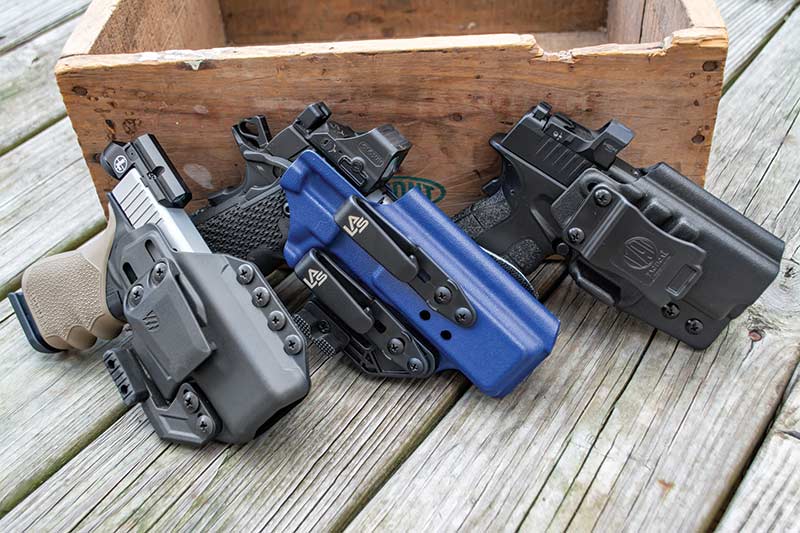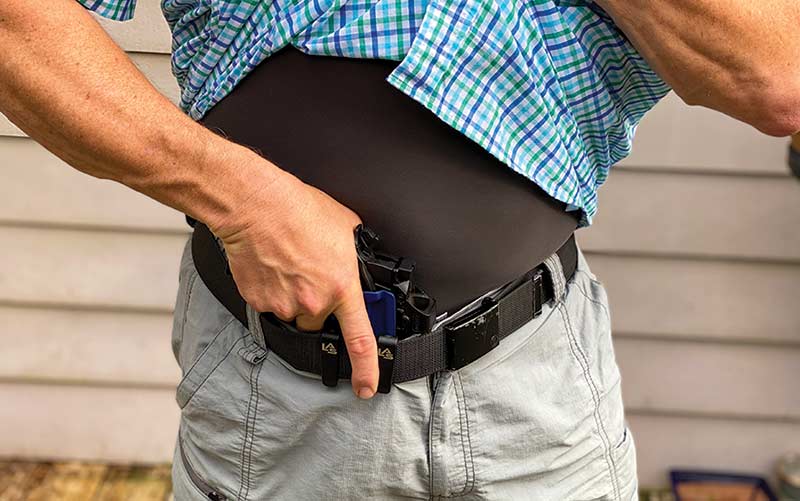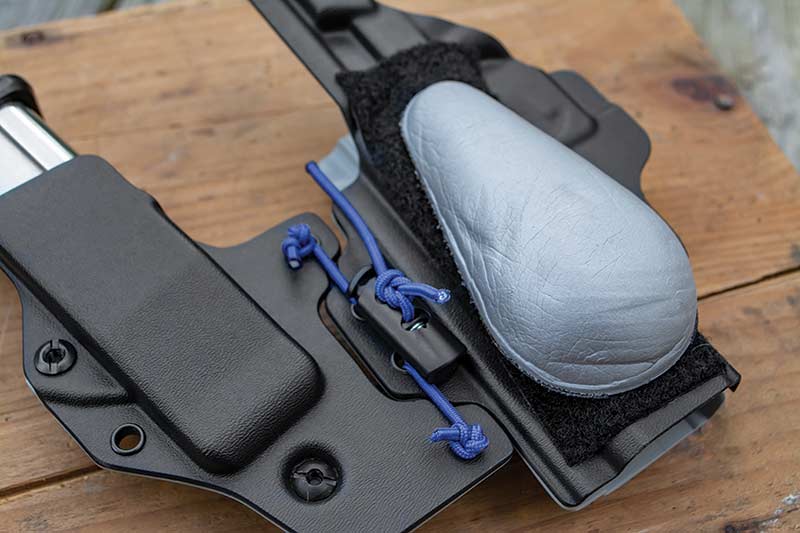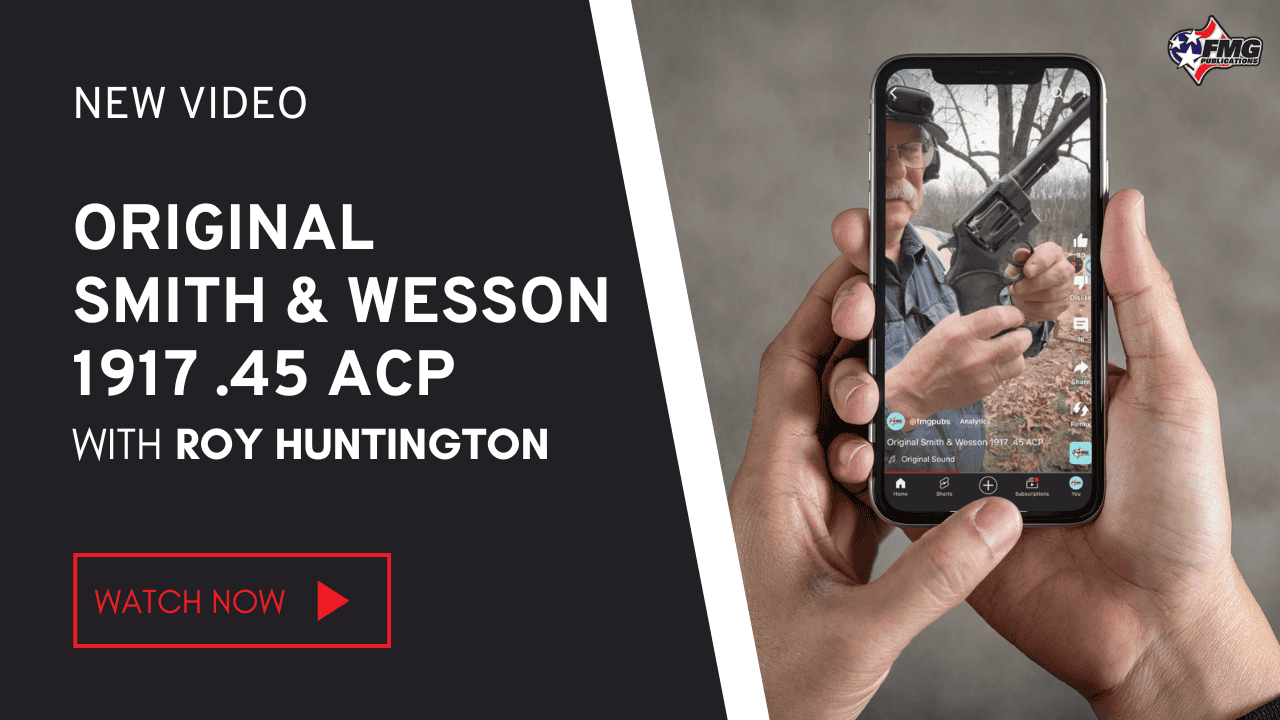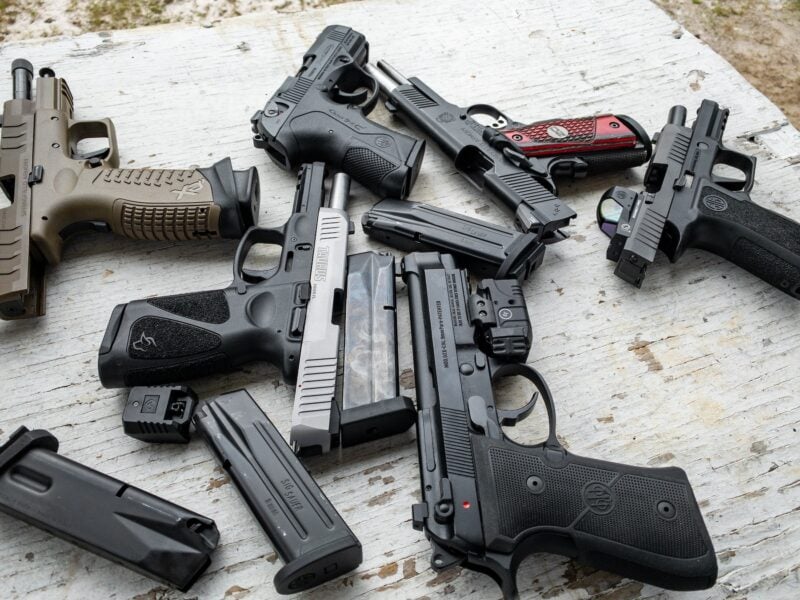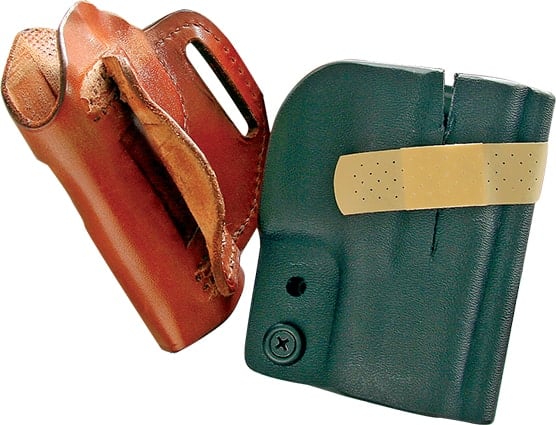Tactical Foolery Or Effective Concealment?
The Real Deal On Appendix Carry
It seems all the “cool kids” are carrying concealed in the appendix position these days. You know, the guys with beards, high-speed, low-drag instructors and all manner of serious gun folk.
So, is it a “tacti-cool” fad or a responsible and effective method of everyday concealed carry?
Ixnay on Hearsay
One of my pet peeves, and something about which I always try to maintain a modicum of self-awareness, is our collective tendency to accept and pass along hearsay as fact. You know what I’m talking about — the gun counter discussions about, well, anything.
“Master Expander ammo is the best! It performs on the street like an ill-tempered possum on meth!” Or perhaps, “Appendix Carry is pure, unbridled insanity. You’ll shoot your ____ off for sure, either before or after bleeding out from perforating your femoral artery.”
You get the idea. If you press those who pass along such wisdom (and I’m as guilty as anyone else), you’ll quickly discover they’ve never performed ballistic testing on Master Expander ammo, neither have they attended any autopsies or studied compilations of street shooting data, nor have they personally tried appendix carry to form their own fact-based opinion.
I decided to do my own experimentation on appendix carry to form my own opinions about the pros and cons.
Myths or Reality?
Let’s start by recognizing the warts on the clothes-less emperor.
First is the idea your gun is pointed at sensitive body parts. Most people carry “appendix” in the 12:30 to 2 o’clock position. The question is, are you directly muzzling body parts?
It depends. The belly can apply pressure to the grip area of your handgun, thereby angling the muzzle back toward you. Even with a suboptimal equipment solution, I didn’t encounter direct muzzling aiming back into my body. Don’t get me wrong, it’s close, just not direct in a “perforate your abdomen” kind of way. Hold this thought — when we talk about gear, we’ll share some “Aha!” moments.
Second is a concern about punching your femoral artery with an appendix location mishap. Your femoral is deep in the leg, between the exterior and femur, so you’d have to be carrying in an orientation where the muzzle was jammed into the meat of your thigh. This is not comfortable, so you probably won’t be doing it. I found the most comfortable carry position was right at 1 o’clock, so the muzzle was oriented more between my thighs rather than on top of my leg. During a draw or reholstering maneuver, it’s up to you where the gun is pointing, so any risk there depends entirely on your level of practice and caution.
Third is the generalized concern you can shoot yourself somewhere more easily when carrying in an appendix position. I’m not sure this one is entirely factual, at least in the respect you’re more likely to shoot yourself from an appendix position than a traditional hip location.
There is an endless stream of examples of people shooting themselves with any type of carry method; IWB, OWB, belly band, fanny pack, ankle holster, shoulder holster and all the rest. I can even send you at least one case of someone shooting themselves with a gun “safely” stored in a floor-mounted gun safe. So, the idea you’ll shoot yourself with appendix carry and no other method just doesn’t hold water. If you screw up, you can shoot yourself using any carry method.
Net-Net on Myths
For me, after giving appendix the good ol’ college try, the myths netted out like this. If I somehow fired my gun, I was going to get grazed somewhere in the interior upper leg area. A direct hit on something critically important seemed a lower probability than claimed. To be fair, a negligent discharge in a traditional IWB strong-side position is going to deliver a painful grazing or penetration wound as well. Just ask some of those folks on YouTube.
So, how did my experiment pan out? What are the real pros and cons?
Fast Draws
Drawing from an appendix position is fast. Really fast. I observed a 20 to 30% faster draw from the appendix position overall using timings drawn from real concealment to getting a shot on target. Part of the speed comes from the economy of motion. It’s a very natural movement of your arm at the elbow joint only. You don’t have to draw your strong-side arm back, shoulder and all, to access the gun.
Snag Resistant
If you carry strong-side IWB under a cover garment, you may have experienced the “error rate.” For every “X” draws at high speed, your gun is going to get completely or partially hung up on your cover garment “Y” percent of the time. It’s quite a reach for your offside hand to get everything out of the way and the shirt tends to pull tight to the body cleared from that angle, increasing the odds of a snag. It’s easier for your support hand to clear the cover garment generously when your clearing hand is right in front of the holster.
Outstanding Concealment
Rather than being exposed on the side of your body where your handgun can bump people and objects, it’s in a protected and hidden area. Most men and women are larger in the chest than the waist, so cover garments tend to hang loosely over an appendix-positioned gun.
Improved Gun Security
Third, appendix carry places the gun in a very protected position. Strong-side carry does expose an inch or so of gear out to the side of your normal line of motion. With appendix, your body backstops the handgun. You also tend to naturally protect anything in this area. When hugging or brushing against people in crowds, appendix carry keeps your gun discreet. It’s also easier for you to apply leverage to keep your gun in place during a struggle.
Better Seated Access
With a higher ride frontal position, you can reach your handgun when at a desk, driving or lounging. Since your elbow doesn’t have to move to the rear of your body, the seat back doesn’t interfere. Nor do seat belts.
Carry a Larger Gun?
Huh? Yes. Strangely enough, with the right holster and positioning, I can carry a larger, even full-sized handgun more easily than a micro or compact — and with better concealment than the same gun in a strong-side IWB position.
I’ve been carrying a full-sized Staccato 2011 P model with 4.4″ barrel and 17-round magazine in an LAS Concealment Shogun holster with no issues. A T-shirt works just fine for total concealment. The concealment wing makes the grip ride along my body and the optional teardrop wedge makes the longer overall length ride better on top of the inside of my leg.
Comfort
Comfort is the big “it depends” factor in my experience. While body shape does matter — it’s easier to carry in the appendix position with fewer extra pounds around the waist — equipment and placement make all the difference. Hold that thought …
You will almost certainly experience some pressure when sitting. The more I carried toward just right of center (I’m right-handed), the less pressure I experienced
Muzzling
While I didn’t experience the hearsay horror stories, your holstered handgun will cover parts of your body, at least in a potential “grazing” sense. To be fair, this applies to virtually any carry method except a widely spaced outside-the-waistband setup. If you’re carrying IWB, in a belly band, certain movements and body positions will result in similar muzzling.
Gear Tips
It took me about six minutes to figure out the importance of using a proper and dedicated appendix carry holster. A couple of features are make or break.
A concealment wing exerts pressure against the rear of the belt, pushing the grip side of the holster and gun toward the body. This is key as it’s the deciding factor in making the grip ride discreetly along your abdomen. All of my trial holsters had this feature.
The big secret is using an optional foam wedge. Especially if you have a few extra pounds in the belly area like I do, the padding on the back of the holster shoves the muzzle away from your body. This not only makes an exponential increase in comfort, but it also goes a long way to prevent those muzzling concerns we discussed earlier. I cannot overemphasize how much difference this makes. For me, there is no appendix carry without using a wedge. You can pick one up for any holster from LAS Concealment.
Use a belt with a thin buckle and position the buckle to the support side. Making sure the buckle doesn’t sit on top of the holster minimizes any potential printing through the cover garment.
Conclusion
As with any method of carry, one should always exercise extreme care when drawing and especially when reholstering. Putting the gun back in the holster should be a “how slow can you go” competition with eyes on the process from start to finish. Some appendix carriers like to holster the gun prior to mounting on the belt. Others will move the hips forward to ensure the muzzle is pointing at the ground while reholstering. Whatever your safety method, be slow and careful.
I have to say, after my long-term experiment, the carry method is growing on me. The improved concealment, security and speed of draw are compelling advantages.
For more info: LASConcealment.com, Blackhawk.com, 1791Gunleather.com
Subscribe To American Handgunner

Get More Carry Options content!
Sign up for the newsletter here:

